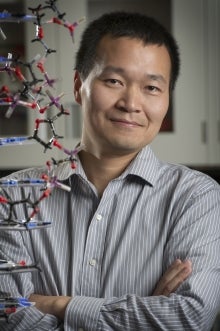
Juewen Liu, a member of the Microplastics Fingerprinting project, has found his way into the top 1 per cent of citations for his field of study based on Clarivate Analytics’ Highly Cited Researchers™ 2022 list. The annual publication uses both quantitative and qualitative analysis to identify individuals from across the globe who have demonstrated significant and broad influence in their chosen field or fields of research.
The list published by the global analytics firm Clarivate identifies the “who’s who” of influential researchers. Recipients are selected for their exceptional research performance, determined by production of multiple highly cited papers that rank in the top 1% by citations for field and year in Web of Science.
David Pendlebury, Head of Research Analysis at the Institute for Scientific Information at Clarivate said:
“Research fuels the race for knowledge and it is important that nations and institutions celebrate the individuals who drive the wheel of innovation. The Highly Cited Researchers list identifies and celebrates exceptional individual researchers at the University of Waterloo who are having a significant impact on the research community as evidenced by the rate at which their work is being cited by their peers."
This is Dr. Juewen Liu's first time appearing on the exclusive Highly Cited Researchers list. He is a research powerhouse with over 36,000 citations, an h-index of 91 and more than 500 publications.
Liu is a leader in the field of bionanotechnology. He's found DNA molecules can be altered to serve as highly selective biosensors and reaction catalysts. He is interested in using DNA and lipids as functional polymers and building blocks to interface with metal ions, nanoparticles and hydrogels utilised for bioanalytical techniques.
Applications include detecting heavy metals instantly in water samples and targeted drug delivery.
His breakthrough in understanding the fundamental interactions of attaching DNA strands to the surface of gold nanoparticles was named one of the most influential in the history of the surface chemistry journal Langmuir. His discovery resolved many long-standing questions and paved the way for advances in biosensor technology.